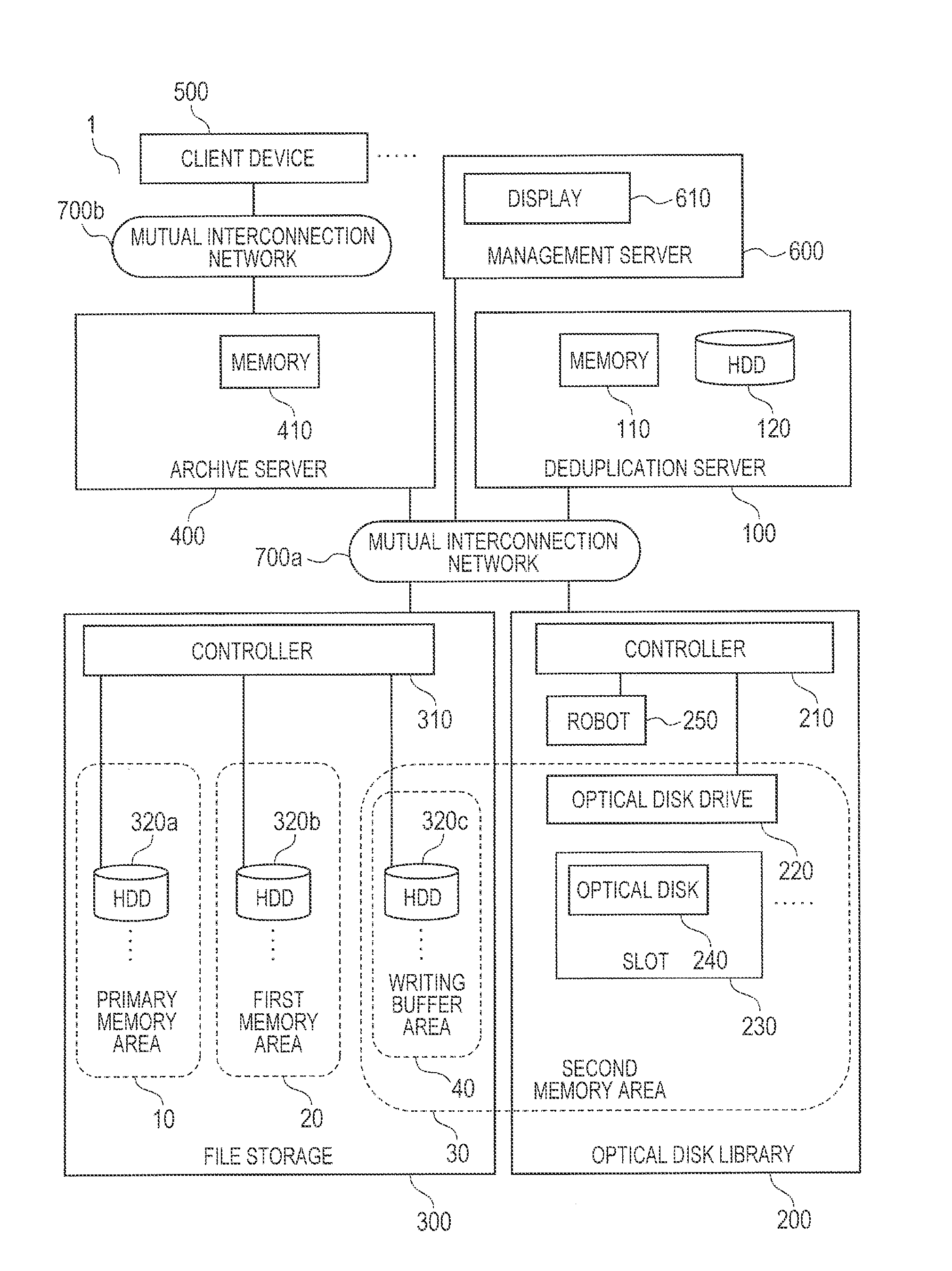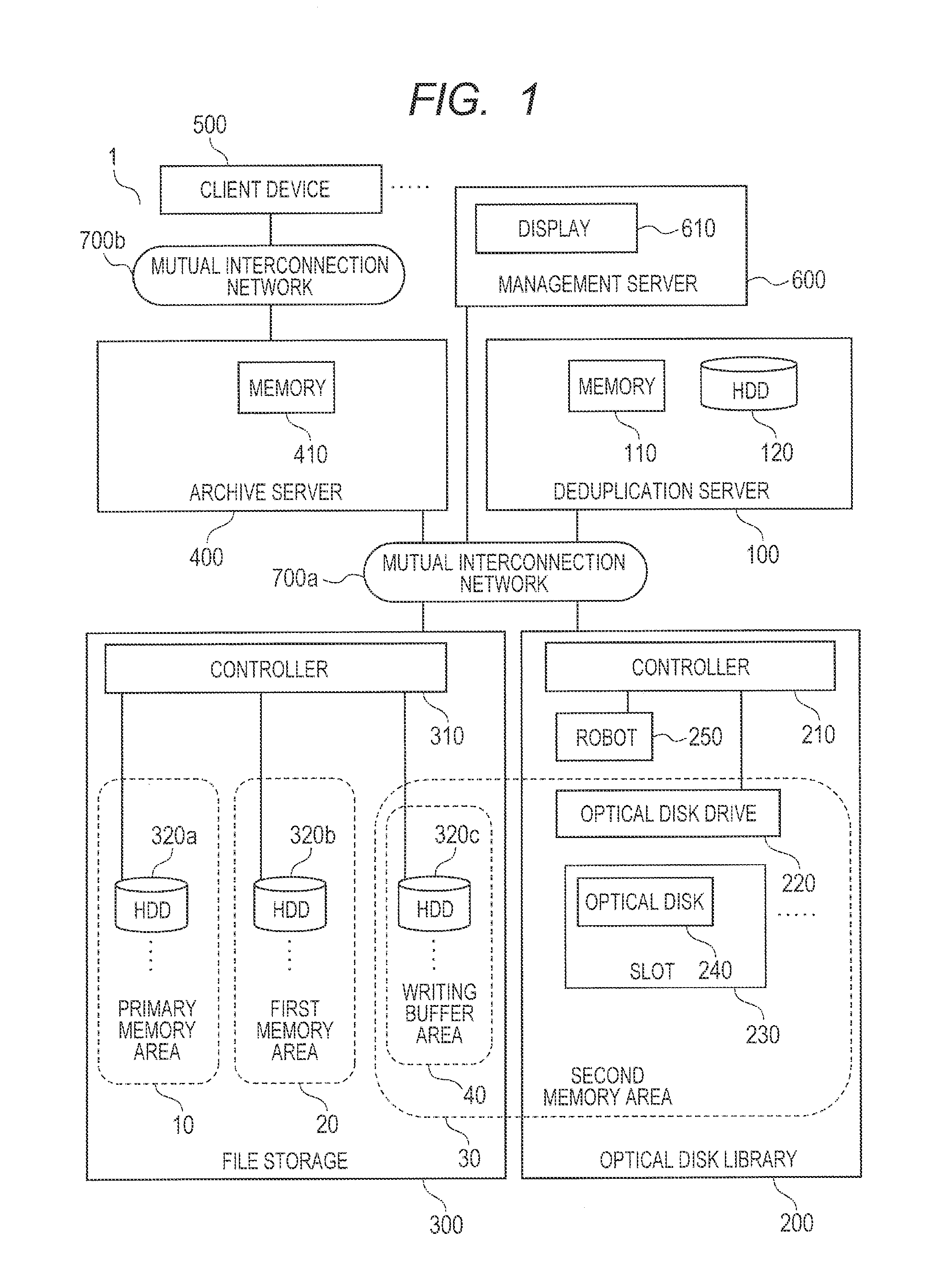Information processing system
a technology of information processing and information processing, applied in the field of information processing system, can solve the problems of large time taken for the deduplication process, low random access performance of tape library or optical disk library, and inability to finish the deduplication process within a realistic period, so as to reduce overhead
- Summary
- Abstract
- Description
- Claims
- Application Information
AI Technical Summary
Benefits of technology
Problems solved by technology
Method used
Image
Examples
first embodiment
[0072]FIG. 1 illustrates the information processing system 1 according to the The information processing system 1 has a function of managing a file (described also as content).
[0073]Components of the information processing system 1 will firstly be described.
[0074]The information processing system 1 includes a deduplication server 100, an optical disk library 200, a file storage 300, an archive server 400, a client device 500, and a management server 600, those of which are interconnected via mutual interconnection networks 700a and 700b so as to be capable of making communication. The interconnection network 700 is a communication network using LAN (Local Area Network) or WAN (Wide Area Network). For example, the interconnection network 700 can use Ethernet (registered trademark), and can utilize TCP / IP (Transmission Control Protocol / Internet Protocol) as a communication protocol.
[0075]Subsequently, each component of the information processing system 1 will be described.
[0076]The a...
second embodiment
[0373]The tables on the memory 311 and on the HDD 320 in the second embodiment may be stored on the optical disk 240, the HDD 320, and the memory in the controller 210, or in the HDD in the controller 210.
[0374]A third embodiment will be described below. FIGS. 28 and 29 are diagrams illustrating an information processing system according to the third embodiment.
[0375]FIG. 28 illustrates an information processing system 1 according to the third embodiment. The information processing system 1 according to the third embodiment is almost the same as the information processing system 1 in the first embodiment, except that an e-mail server 800 is provided instead of the archive server 400 in the first embodiment. The information processing system 1 according to the third embodiment reads an e-mail message from the e-mail server 800 to the client device 500, and transmits the e-mail message from the e-mail server 800, by use of the e-mail server 800. The e-mail message is stored in the pri...
PUM
 Login to View More
Login to View More Abstract
Description
Claims
Application Information
 Login to View More
Login to View More - R&D
- Intellectual Property
- Life Sciences
- Materials
- Tech Scout
- Unparalleled Data Quality
- Higher Quality Content
- 60% Fewer Hallucinations
Browse by: Latest US Patents, China's latest patents, Technical Efficacy Thesaurus, Application Domain, Technology Topic, Popular Technical Reports.
© 2025 PatSnap. All rights reserved.Legal|Privacy policy|Modern Slavery Act Transparency Statement|Sitemap|About US| Contact US: help@patsnap.com



